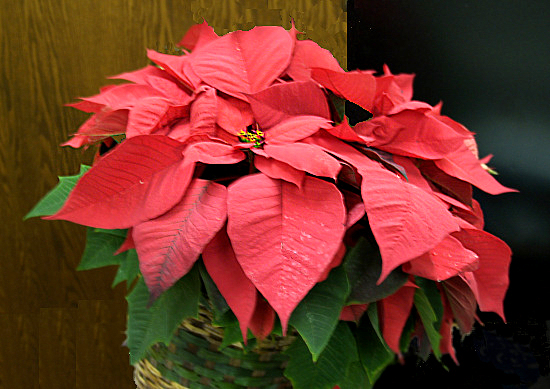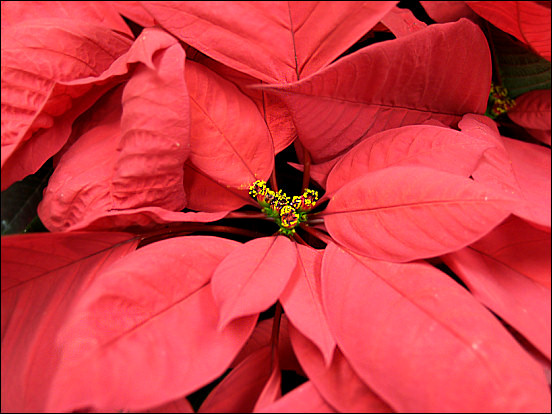

Certain entertainers used to be called illusionists, specializing in making you think you were seeing something other than what you actually were. Nature has a plethora of illusionists. Almost everyone knows some of them: insects that look like sticks and fish that change color to match the sea bottom. Some of you may know that illusions aren't limited to just blending in. In a deception that tends to make men's skin crawl when they hear of it, some fireflies mimic the flashing pattern of the female of another species of firefly—the signal to males of that species that there's a young thing looking for love. But, the mimicker luring the suitor close isn't looking for love, only a good meal!
Even plants get into the act. Many of our species that seem to flaunt
showy flower petals to attract pollinators are casting their illusion, the seeming
petals not petals at all. You doubt? Come Christmas, take a real close look at the
poinsettia and its flowers—those small green or yellow bodies surrounded by the fiery
modified leaves.

Listen to the Audio (mp3 format) as recorded by KTEP, Public Radio for the Southwest.
Contributor: Arthur H. Harris, Laboratory for Environmental Biology, Centennial Museum, University of Texas at El Paso.
Desert Diary is a joint production of the Centennial Museum and KTEP National Public Radio at the University of Texas at El Paso.

A poinsettia plant at Christmas time, a riot of red flowers—or maybe not. Look at the photograph below.

The true flowers revealed, clustered in the center of the red "petals" that actually are modified leaves called bracts. Photographs by A.H. Harris.